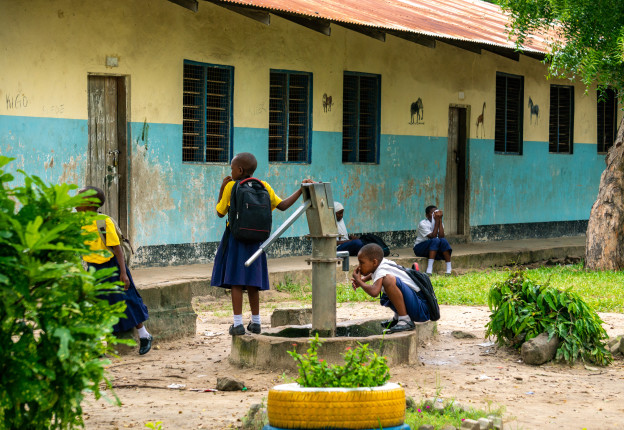-
Taking Stock of Environmental Peacemaking at 20
March 11, 2022 By Shruti Samala“Environmental peacemaking is inherently an optimistic kind of thing,” said Larry Swatuk, Professor at the University of Waterloo’s School of Environment, Enterprise and Development, during a breakout session of the 2nd International Conference on Environmental Peacebuilding. Yet “alternative dispute resolution, making nice, building trust—I just see those spaces closing off,” said Swatuk. “Where resources are concerned and sovereignty is an issue there is a lot of hardball going on that we ignore at our peril. I think we need to reconfigure the peacemaking approach in light of the unwillingness of states to depart from classic statecraft.”
The multi-dimensions of environmental peacemaking: a blessing or curse?
Twenty years after the publication of Environmental Peacemaking, a foundational theoretical and case study volume on environmental peacebuilding, what has not changed is the thorny conceptual problem the field poses to practitioners and researchers, said Ashok Swain, Professor of Peace and Conflict Research at Uppsala University. How do you define environment and peacebuilding? Is environmental peacemaking an area of research or an area of policy-making?
As a crowdsourced field, environmental peacemaking has diversified. The focus and scope of the enterprise has broadened beyond the North American and European perspectives on resource scarcity, now encompassing rights-based narratives, gender, climate change, justice, and the decolonization of knowledge, said Ken Conca, Professor at American University’s School of International Service. These multiple points of entry render environmental peacebuilding a “robust, important, and inclusive” community of practice and theoretical discipline, said Geoff Dabelko, Professor at Ohio University. A “cacophony of ways of knowing” is exciting; it is also, however, what can lead to silos and conceptual “sloppiness,” said Conca.
But with the proliferation of topics in the field, environmental peacebuilding has also gained legitimacy in the last two decades, said Swain. With the threat of climate change, more research funding has been funneled into understanding the climate-conflict nexus, as well as opportunities for cooperation through climate change mitigation and adaptation. “Twenty years ago we were seen as crazy or the skunk in the room,” said Dabelko. But now more attention is paid “when you bring up some of these inconvenient points about doing right by climate can also do wrong by a whole bunch of key constituencies if not done with great care and consideration.”
Grassroots movements and those on the front line are also receiving increasing recognition, said Erika Weinthal, Professor at Duke University’s Nicholas School of the Environment. More attention to environmental defenders, land defenders, and human rights defenders has enabled engaged research with local actors. “As a field, listening more and working in partnership with many of these environmental activists…has allowed for projects to be driven more by what we are hearing on the ground than what we were hearing from our institutions or from the international system,” said Weinthal.
Existing challenges in environmental peacemaking
But strategically and structurally, obstacles remain. For one, post-westphalian environmental peacebuilding has not overcome statist notions of security and policy, said Stacy VanDeveer, Chair of the Department of Conflict Resolution, Human Security, and Global Governance at the University of Massachusetts Boston. Indeed, environmental peacebuilding itself has become more securitized. “Both the peacebuilding and the more effective and more just environmental governance,” said VanDeveer, “remain much, much lower priorities, both in scholarship and in practice, than the traditional security agenda.”
Environmental peacebuilding is also yet to fully integrate politics. “Policy-making doesn’t really want to bring the politics in because it makes things more complicated,” said Swain. But this resistance creates blindspots. Take, for instance, the World Bank. The institution’s development and peacemaking efforts can become compromised when a formula that has been successful in one political context is applied to another without consideration of local political economies, said Swain.
Coming back to scale
These concerns speak to the broader question of scale. Conca said transboundary ecological issues initially served as the central problématique within environmental peacemaking. In the last decade, however, the ascent of hegemonic regionalism as well as securitization frameworks have shifted the axis of theory and praxis towards the small scale. With collective dilemmas such as climate change now dominating environmental spaces there is a growing push to return to scale. In this process, we must not, however, lose sight of plurality at the community level, said Weinthal. “There is a plurality out there of forms of ownership structure and forms of legal systems…but at the global level we like isomorphism. We want similar structures across states because it becomes more legible.”
As such, “it is not just that you participate at this [geopolitical] scale, or cast it at this [local] scale,” said Swatuk. “We have that privilege of movement. We can go from the local to the global. We can be that kind of conduit for conversations that would never take place otherwise.”
Read More
- The Third Wave of Environmental Peacebuilding
- Beware the Dark Side of Environmental Peacebuilding
- New Developments in the Field of Environmental Peacebuilding
- Show Me! Laying the Foundation for the Next Generation of Environmental Peacebuilding
Sources: 2nd International Conference on Environmental Peacebuilding.
Photo Credit: Young girls in Tanzania pump water and drink from water pump, courtesy of Gideon Ikigai, Shutterstock.com
 A Publication of the Stimson Center.
A Publication of the Stimson Center.







